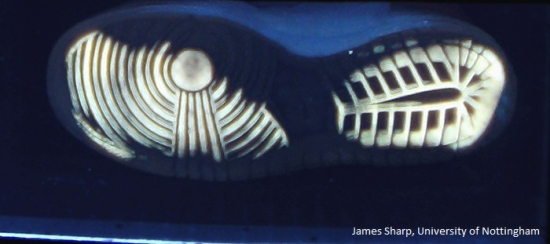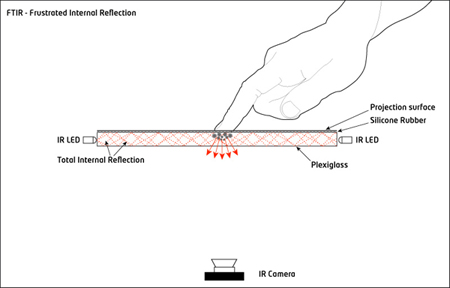By Gina Degtyareva, communications intern at the Royal Society of Biology
 Has anyone ever told you that you have a distinct walk? Or that they can recognise you by your stride? Well that can actually be quantified and measured in your shoeprint.
Has anyone ever told you that you have a distinct walk? Or that they can recognise you by your stride? Well that can actually be quantified and measured in your shoeprint.
It is common knowledge that fingerprints are unique to an individual and are a good way of identifying a person, but have you ever thought about the information that can be recovered from your shoeprint? It’s not just the brand and style of shoe that can be discerned. Although this is useful information it is limiting due to the finite number of styles and many people owning the same shoes.
Footprints are the third most common type of evidence found at a crime scene. Forensic analysis of footwear prints is a fast growing field employing various imaging techniques to gain specific information from a shoe print so it can help in the identification of a suspect. By making images of shoe prints from a crime scene you could estimate the height, weight and gait of a suspect from the unique wear patterns on the sole of their shoe. You could also estimate roughly how fast a suspect was moving and even with how much force they kicked a surface. The shoeprints starts to become a rich and useful piece of evidence.
To be able to compare images of shoeprints from the crime scene, shoeprints need to be taken from suspects. The techniques employed to collect suspects’ shoeprints are traditionally impression based and then transferred into a digital format. However, these techniques can often be time consuming and costly because of the materials involved.
 A more modern approach is using digital imaging methods directly. One such method is Frustrated Total Internal Reflection imaging (FTIR). This technology only requires the suspect to stand on an element called an optical waveguide. This is a sheet of glass or acrylic illuminated from the sides. The light is calibrated in a way where it is totally internally reflected inside the sheet. The contact of a shoe to the surface of the waveguide disrupts this total internal reflection and transmits light into the shoe surface where it is then scattered. This scattering can be measured as it will be detected at the points of contact. The resulting image will be of where the shoe has touched the glass.
A more modern approach is using digital imaging methods directly. One such method is Frustrated Total Internal Reflection imaging (FTIR). This technology only requires the suspect to stand on an element called an optical waveguide. This is a sheet of glass or acrylic illuminated from the sides. The light is calibrated in a way where it is totally internally reflected inside the sheet. The contact of a shoe to the surface of the waveguide disrupts this total internal reflection and transmits light into the shoe surface where it is then scattered. This scattering can be measured as it will be detected at the points of contact. The resulting image will be of where the shoe has touched the glass.
The shoeprint will be different in different people wearing the same shoe and different if a different amount of pressure is applied. Walking can be simulated through the back and forward rocking motion of the shoe and also imaged providing more reference points.
The National Footwear Database was launched in 2007 and more shoeprints are being collected each day to help link suspects to crimes. The database has proved useful many times in police investigations due to the high incidence of footprints left at crimes. Applying FTIR imaging to footwear can speed up print collection and expand the database and could soon rival the National DNA database (NDNAD) which started in 1995 and had 5.8 million entries at the start of 2016. DNA is still the most common type of evidence left at the crime scene and DNA analysis is extremely important in identifying a suspect.
[Reference: Needham, J. A. and Sharp, J. S. ‘Watch your step! A frustrated total internal reflection approach to forensic footwear imaging’. Sci. Rep. 6, 21290; doi: 10.1038/srep21290 (2016).]
Listen to Sir Alec Jeffreys, inventor of DNA fingerprinting, being interviewed by Professor Alison Woollard FRSB at the RSB’s fundraising event in May 2016.

